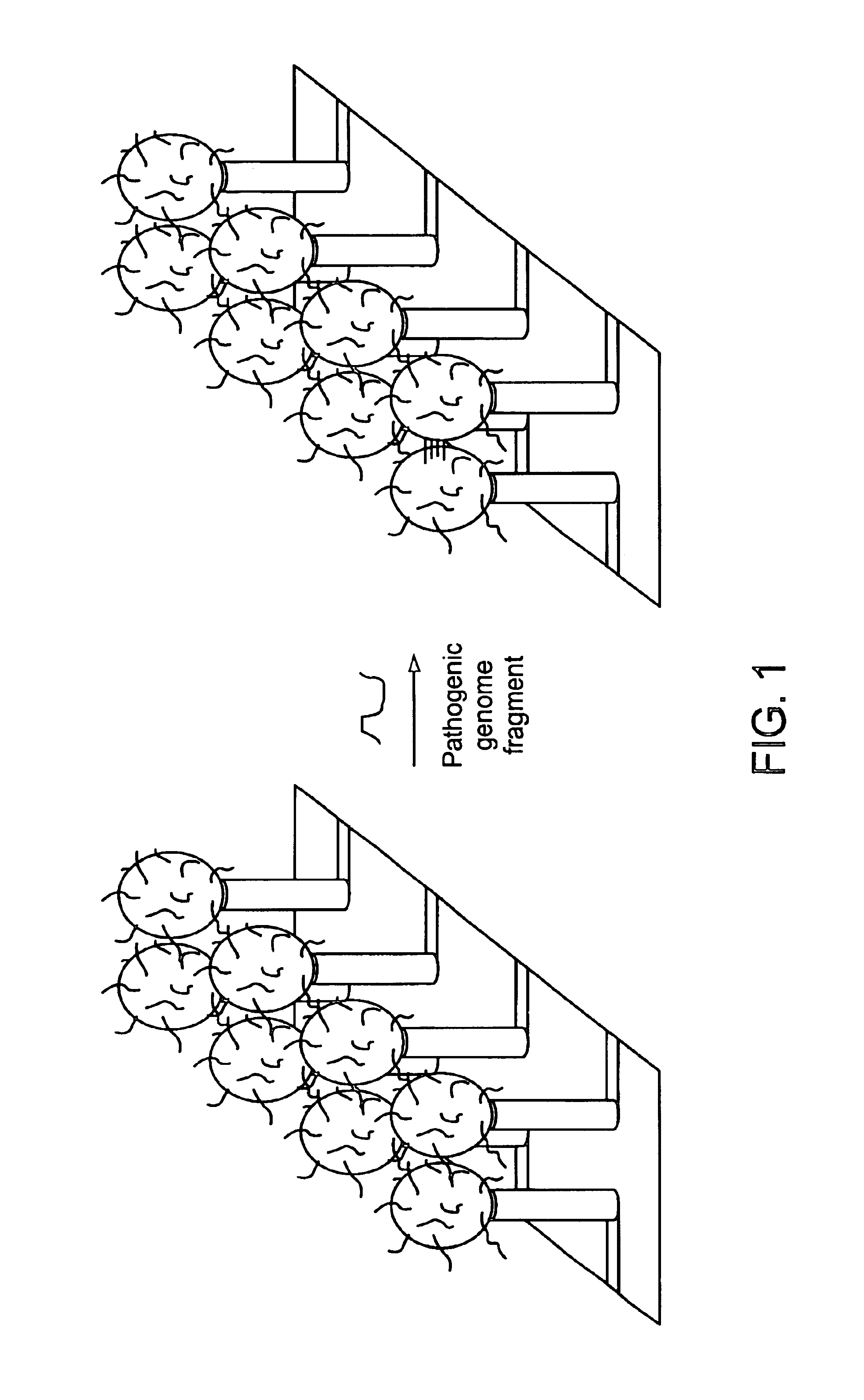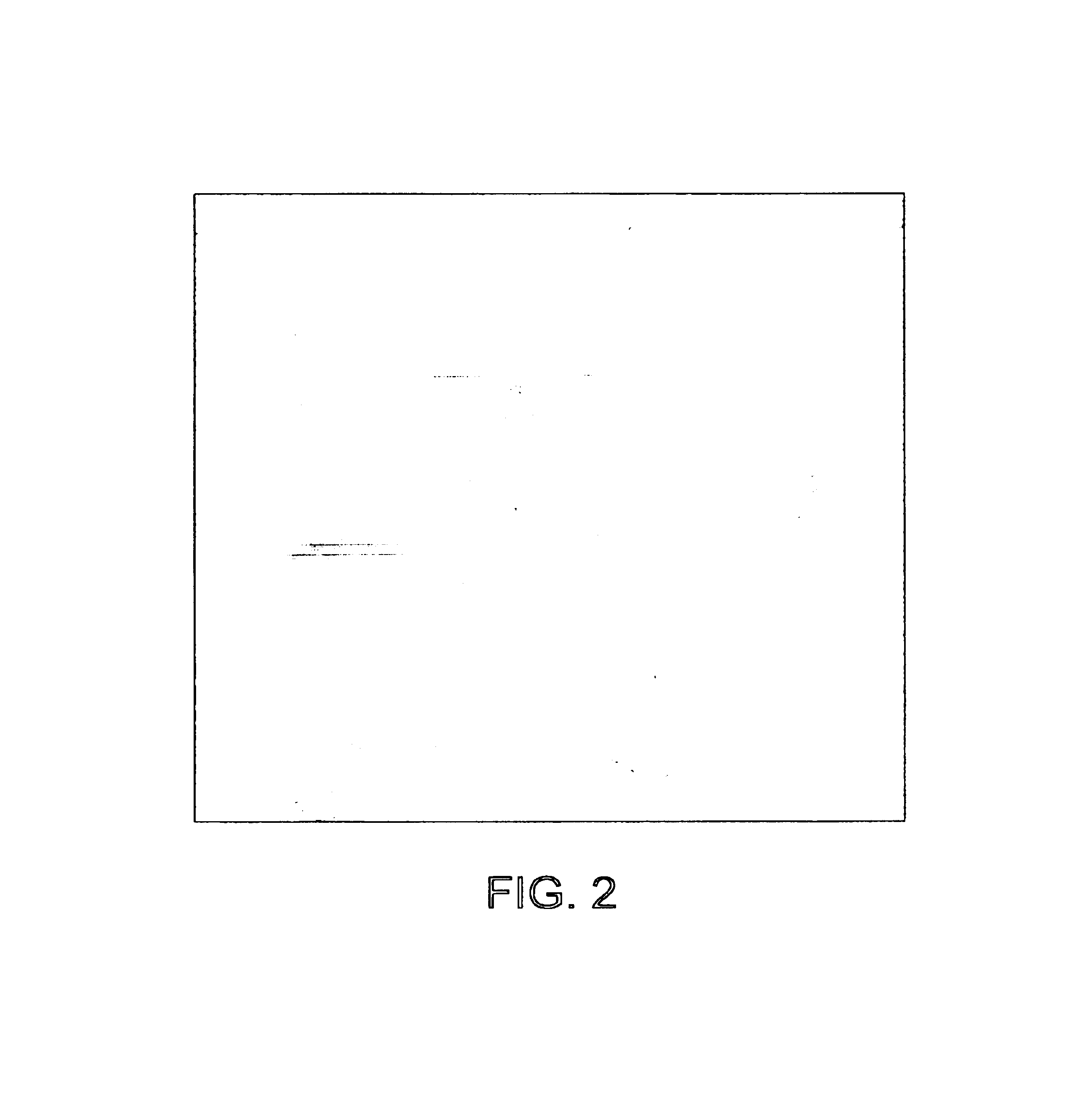DNA-bridged carbon nanotube arrays
a carbon nanotube and array technology, applied in the direction of catalyst activation/preparation, catalyst activation/preparation, metal/metal-oxide/metal-hydroxide catalysts, etc., can solve the problems of poor specificity and reproducibility, long recovery time, and prior art probes
- Summary
- Abstract
- Description
- Claims
- Application Information
AI Technical Summary
Benefits of technology
Problems solved by technology
Method used
Image
Examples
example 1
Controllable Creation of Arrays of Addressable Multi-walled Carbon Nanotubes
[0086]CNTs are grown by the plasma-enhanced hot filament chemical vapor deposition method, including on an e-beam patterned substrate. Metallic nickel, deposited via e-beam lithography over a non-catalytic metal provides the electrical leads, is used as the catalyst for CNT growth.
example 2
Growth of Controlled Dimension Gold-coated Spheres
[0087]Gold-coating procedure of spheres utilizes the functionalization of microspheres with thiols groups to enable the self-assembly of metallic gold nanoparticles on functionalized sphere surfaces. The initially formed gold layer is subsequently built up either through sequential steps of linker addition followed by additional contact with gold nanoparticles, or through electroless deposition of gold on the functionalized sphere surfaces.
example 3
Synthesis of DNA Sequences with Thiol Linkers
[0088]The synthetic method involves a solution-phase reaction between 4-mercaptobenzoic acid and a terminal amine either at the 2′ or 5′ position on the ribose moiety. The incorporation of an amine at the 2′ or 5′ position is accomplished during chemical DNA synthesis using commercially available reagents. A 2′-derivatization is carried out to orient the DNA away from a gold surface when the linker is placed at the 3′ end of an oligonucelotide, while a 5′-derivization is done to orient the oligonucleotide linked at the 5′ end. Alternatively 4-mercaptobenzoic acid is reacted with a 5′ pendant alkyl-amine or the incorporation of a short alkanethiol linker to the 3′ end of DNA using a commercially-available reagent.
PUM
| Property | Measurement | Unit |
|---|---|---|
| thickness | aaaaa | aaaaa |
| height | aaaaa | aaaaa |
| diameter | aaaaa | aaaaa |
Abstract
Description
Claims
Application Information
 Login to View More
Login to View More - R&D
- Intellectual Property
- Life Sciences
- Materials
- Tech Scout
- Unparalleled Data Quality
- Higher Quality Content
- 60% Fewer Hallucinations
Browse by: Latest US Patents, China's latest patents, Technical Efficacy Thesaurus, Application Domain, Technology Topic, Popular Technical Reports.
© 2025 PatSnap. All rights reserved.Legal|Privacy policy|Modern Slavery Act Transparency Statement|Sitemap|About US| Contact US: help@patsnap.com



